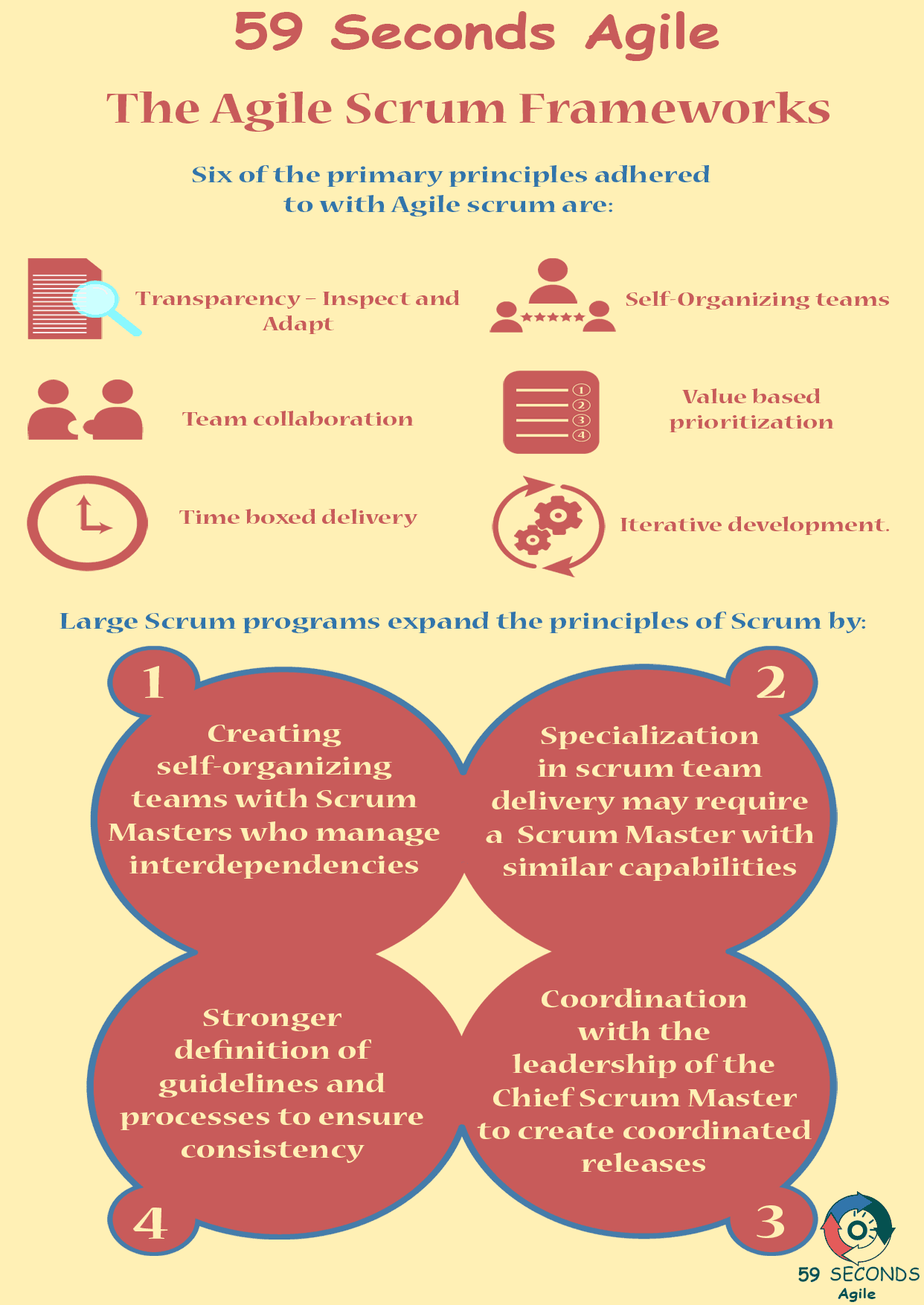What is the Agile Scrum Framework and what role does the Scrum Master play within the framework? Lets take a look at the history of Agile development and the Agile Scrum Frameworks for Scrum Masters.
The History of Agile
A 59 Seconds Agile Video Animation
The Agile Scrum Framework for Scrum Masters
The Agile Scrum framework is designed to deliver products and projects of any size. This includes projects, programs, and portfolios. Scrum provides guidelines on delivery techniques, events, and roles. Many of the same ceremonies are held within both a standard Agile scrum project and an Agile Scrum program focusing on the larger enterprise. The same goes for team member roles and scrum artifacts. Within both types of projects and programs, the Scrum Master’s role remains a focal champion of adherence to the Scrum framework to deliver the highest value features in a prioritized order to meet the established Return on Investment (ROI) for the executing organization. Differences are noted in the execution around the framework of principles, ceremonies, and roles.
Agile Scrum Framework: Scrum Principles
Agile Scrum utilizes several principles whether delivery is by a single scrum team or a larger enterprise initiative using program delivery frameworks. The Scrum Master is the facilitator, coach, and champion who protects the larger team while delivering. Six of the primary principles adhered to with Agile scrum are:
– Transparency
– Inspect and Adapt
– Self-Organizing teams
– Team collaboration
– Value-based prioritization
– Time-boxed delivery and
– Iterative development process.
The principles for both single scrum master projects and those with Chief Scrum Masters for larger projects, programs, and portfolios are similar. The primary differences are around scaling the principles.

Team collaboration (in self organizing cross functional team) takes on a different level of scalability and management by the Scrum Master with larger program and portfolio opportunities. Managing team activities across multiple work streams requires that Scrum Masters collaborate across the program versus having a single stream perspective. Scaled Agile introduces an even larger enterprise component to the delivery of projects using Scrum Masters as domain specialists to guide teams within the more expansive nature of program and portfolio delivery.
Large Scrum programs expand the principles of Scrum by:
– Creating self-organizing teams (cross functional teams) with Scrum Masters who manage interdependencies
– Specialization in scrum team delivery may require a Scrum Master with similar capabilities
– Stronger definition of guidelines and processes to ensure consistency and
Our Favourite Agile Books
We found these books great for finding out more information on Agile Scrum:
Coordination with the leadership of the Chief Scrum Master to create coordinated releases
Ceremonies
The value of ceremonies in an Agile Scrum project are paramount in obtaining the benefits of the framework. The ceremonies that are consistent for both single and enterprise are:
– Backlog Prioritisation
– Sprint Planning
– Daily Stand Up
– Sprint Review and
– Sprint Retrospective.
